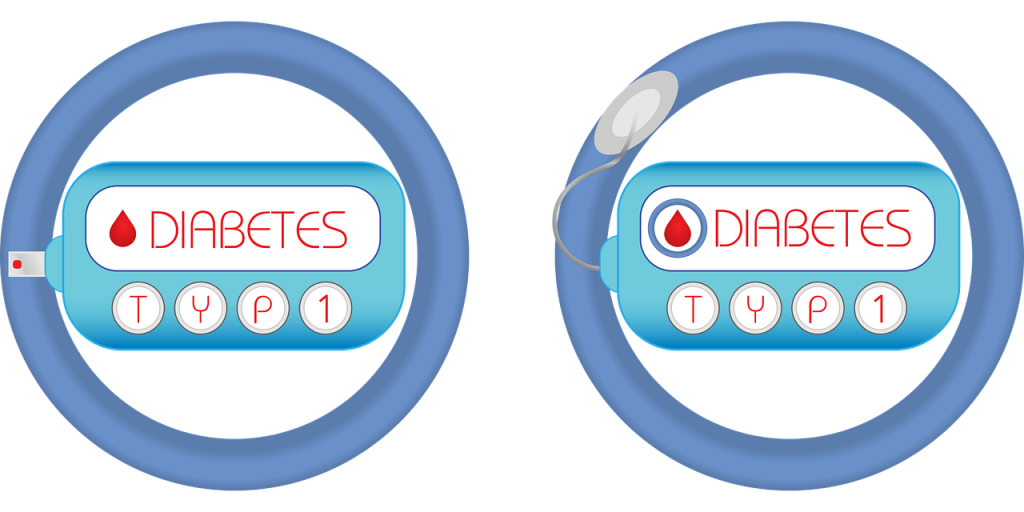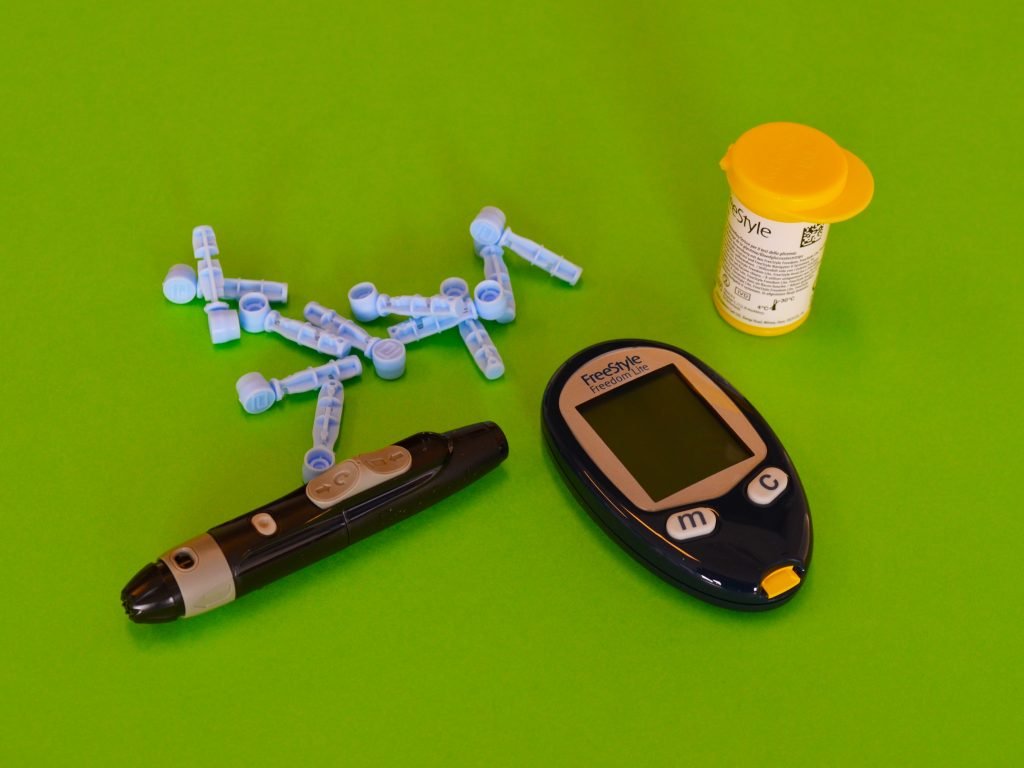
Researchers define diabetes mellitus as a group of metabolic disorders that cause the blood sugar level to rise above the normal limit. This can be due to imbalances in the secretion of the insulin hormone, or its work and effect in the cells of the body. After reading this article, you will get a general overview of diabetes Mellitus and know how to avoid and deal with this chronic disease.
To better understand the disease, we should know the role of insulin in controlling blood sugar levels. In fact, eating or exposure to certain factors causes high blood sugar. This stimulates the pancreas to release the hormone of insulin that regulates blood sugar levels by stimulating its entry into the various cells of the body.
Therefore, the presence of a problem in the secretion of insulin or the response of cells to the secreted insulin results in high levels of sugar in the blood. This is known as diabetes, a chronic disease that accompanies the patient throughout his life. People with this disease may experience some health complications that may result in their death.
Diabetes is considered the seventh cause of death in the United States of America. But the medical advice and existing medications can help to control and reduce the risk of these complications.
In the last decades, diabetes has become very prevalent. It has affected approximately 9.4% of the population of the United States of America. Approximately thirty million people in the population of the United States of America have diabetes and do not realize it. Besides, It constitutes a burden on the country’s economy as its costs are very high.
There are three types of diabetes: type 1, type 2, and gestational diabetes. But what are the differences between these different types?

This type of diabetes is an autoimmune disease. Autoimmune diseases are diseases that occur when the body’s immune system works against a part of the body.
When one develops diabetes, the immune system attacks and destroys the beta cells that are responsible for producing insulin in the pancreas. As a result, the pancreas produces very little insulin, or it may not produce insulin at all. Therefore, a person with type 1 diabetes must receive insulin daily, throughout his or her life.
So far, scientists don’t know exactly why the body’s immune system attacks beta cells. But they believe the factors causing the disease include: autoimmune, genetics, environmental factors, and possible involvement of certain types of viruses. Most of the time, the first type of diabetes begins to develop in children and young people. But it may appear at any age.
Usually, symptoms of type 1 diabetes appear within a short period of time. But the destruction of beta cells sometimes begins several years before the onset of symptoms. These symptoms include extreme thirst, frequent urination, persistent hunger, low weight, blurred vision, and extreme fatigue. If type 1 diabetes is not diagnosed and treated, you may enter a coma, which can lead to death. This phenomenon is known as diabetic ketoacidosis (DKA).
Type 2 diabetes is the most common type of diabetes among people and accounts for between 90 and 95 percent of all patients with diabetes. This type of diabetes is usually the result of aging, obesity, genetics, family medical history with the disease, personal medical record (e.g. pregnancy diabetes), physical inactivity, and ethnicity. About 80 percent of type 2 diabetes patients are overweight.

In patients with type 2 diabetes, the production of insulin by the pancreas is enough. But the body for incomprehensible reasons is not able to use insulin effectively and benefit from it. This is known as “insulin resistance”. After several years, insulin production decreases, and the patient’s condition becomes similar to that of type 1 diabetics. At this stage, glucose accumulates in the blood and the body cannot use its own self-energy source (glucose) effectively.
Symptoms of type 2 diabetes begin to appear and develop gradually. They do not appear suddenly, like type 1 diabetes. These symptoms include fatigue, nausea, frequent urination, abnormal thirst, low weight, blurred vision, recurrent infections, and slowing recovery from injuries and wounds. But some patients, don’t show any symptoms at all.
Women develop gestational diabetes only during pregnancy. Type 2 diabetes, is the most common type of diabetes among women of Afro-American, Indo-American, and Latin American origins, as well as among women with a family history of diabetes. Women who have gestational diabetes are 20 to 50 percent at risk of developing type 2 diabetes within 5 to 10 years.
Diabetes is not an infectious disease. It does not move from person to person. But there are many factors that can increase the likelihood of developing diabetes.
Type 1 diabetes affects men and women at the same rate.
Type 2 diabetes is the most prevalent among the elderly, especially those who are overweight.
The normal rate of blood sugar varies according to the nature of the test that is being performed. Here are the main tests that diabetics usually carry out to know about their disease:
This test requires the person to fast for an entire night to be ready for the morning test. We consider the sugar level normal if the test result is lower than 100 mg/dL, equivalent to 5.6 mmol/L. If the sugar level ranges between 100 to 125 mg/dL, equivalent to 5.6-6.9 mmol/L, this indicates that the person is in a pre-diabetes stage. Doctors diagnose a person as diabetic if two separate glucose test results show 126 mg/dL or more each, which is equivalent to 7 mmol/L or more.

The cumulative glucose value expresses the average blood sugar level over the past two to three months. This test measures the amount of sugar attached to hemoglobin in the blood. It does not require fasting before being performed. We consider the sugar level normal if the test result is less than 5.7%.
We say that a person has diabetes if two separate glucose test results show 6.5% or more each. If the test results range between 5.7-6.4%, this indicates that the person is in the stage of pre-diabetes.
In this test, a sample of a person’s blood is taken at a random time; that is, without taking into account fasting or the date of the last meal the person ate before undergoing the examination. We say that a particular person has diabetes if the blood sugar level is 200 mg/deciliter or higher, which is equivalent to 11.1 mmol/liter.
This test requires the person to fast for an entire night, and measure the blood sugar level in the morning. Then, the person needs to drink something with some sugar in it. That particular person should measure blood sugar levels periodically over the next two hours.
After the test, the normal sugar value should be less than 140 mg/deciliter. This is equivalent to 7.8 mmol / L. If the value exceeds 200 mg/deciliter, (the equivalent to 11.1 mmol / L), we consider this an indicator of diabetes. But if the values range between 140-199 mg/dL, (the equivalent to 11-7.8 mmol/L), this indicates that the person is in a pre-diabetes stage.
Diabetes is characterized by a high blood sugar level. The endurance of this condition for long periods may result in damage to several important parts of the body. As a result, the patient will suffer from more other health complications. Below, we will find the most important ones of these complications:

This means retinal damage that increases the risk of blindness.
Diabetes can cause kidney damage, and this can result in kidney failure.
This means that diabetes can cause sores and foot wounds, and may end up amputating the injured leg or foot.
Diabetes can lead to the accumulation of fatty substances within the arteries. This can cause an increased risk of blood clots. This increases the risk of stroke, heart attack, and peripheral artery disease.
Examples of these problems are gastroparesis, chronic diarrhea, and the inability to control heartbeats and blood pressure in different positions.
This means that the body arteries undergo high pressure from the blood
This may include triglycerides.
As you may know, there is a lot to say about the topic of diabetes. To avoid having a lengthy and boring article, I have decided to split it into two parts. This is the first one, and the second one will be published very soon.
Leave a comment